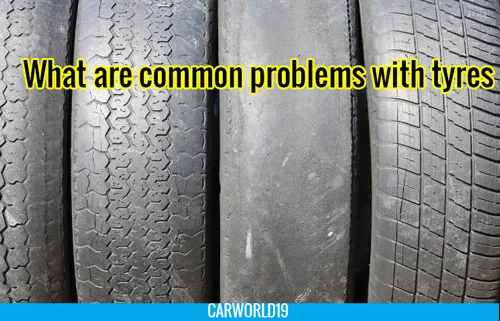As the only point of contact between your automobile and the road, your tyres are probably going to be the main source of issues you have with your car.
It's crucial to be aware of the warning indications of tyre trouble so that you can get them fixed or changed as soon as a problem is found, keeping your automobile always road-safe.
 |
| What are common problems with tyres? |
The 8 Most Typical Tyre Issues
The most typical tire issues that motorists are likely to encounter have been compiled by our experts at Munster Tyres.
Beyond inflation
Over-inflated tires will not function safely. This is because the more air a tire has, the harder it is for it to stay in touch with the road.
D and let the tread develop traction. In addition, the structure of the tires will be put under more stress the more pressure you apply, which will reduce their lifespan.
Examining the wear patterns of your tires is one approach to determine if you have an overinflated tire. Are your tires' centers unusually worn-out? If so, they likely need to let some air out.
When inflated
According to research, the tyre pressure of almost 60% of domestic cars and trucks on European roads is below the required level. Any or all of the following issues might result from underinflated tires:
- A higher chance of under steer, which can cause crashes.
- Ineffective handling and trouble making accurate moves.
- More susceptible to a general deterioration.
- A higher chance of punctures.
You may keep an eye on your tires' air pressure and inflate or deflate them as necessary if you're worried about an underinflated tire.
Bulging and cracking
When your tires strike a pothole or curb, they may develop fractures and bulges in the sidewall from the force of the contact.
This issue can only be resolved by completely changing the tires if your tyres are either under or over-inflated. Although cracking can be a sign that a tyre is growing old and should be replaced nevertheless, this may not necessarily be a negative thing.
Driving quickly tyre damage from fast driving
Your tires are more likely to be damaged than if you were driving at lower speeds if you often drive fast (for instance, if you commute on the freeway). High-speed collisions with road hazards like potholes can result in more severe damage, and greater driving speeds can also damage tyres and result in a loss of control.
To maintain your safety when driving on the roadways, you should change your tires as soon as you discover any damage to them after often driving at high speeds.
Misalignment
Your tire may be out of alignment if camber wear, which is when one side of the tire is worn out more than the other.
This is something that has to be looked at whether your car struck a curb, you changed the height of your car, or you're just suffering ordinary wear and tear.
Depending on the degree of wear, a misaligned tire should be reinstalled or changed since, if not done correctly, it can diminish traction and grip on the road.
Cuts and piercings
Puncture damage typically results from a specific type of traffic danger, such as shattered glass on the road. As a result, the motorist is rarely to blame for this kind of harm. However, by making sure that your tires are properly filled, you may strengthen your resistance against punctures.
Damage to emergency brakes
The issue with sudden braking is that it can cause tyre wear in a very precise place to occur fairly immediately.
If this is ignored for too long, it may eventually cause deflation and obfuscate vehicle handling. Therefore, if you recently made an emergency stop, be sure to inspect your tires for any signs of localized wear.
Use and abuse
All tires will experience general wear and tear as they are used over time, but it's crucial to keep an eye on the tread depth to make sure it is within the legal limit.
You cannot lawfully drive on the roadways and need to get your tires changed if the tread depth is less than 1.6 mm.
While this amount of wear is the absolute minimum, it is important to keep in mind that changing your tires before they reach it will guarantee that your tires are safe to be driven on roads without compromising performance and grip.
